Day 9: Elijah, Nazareth, knafee, Sea of Galilee, the Golan Heights (long)
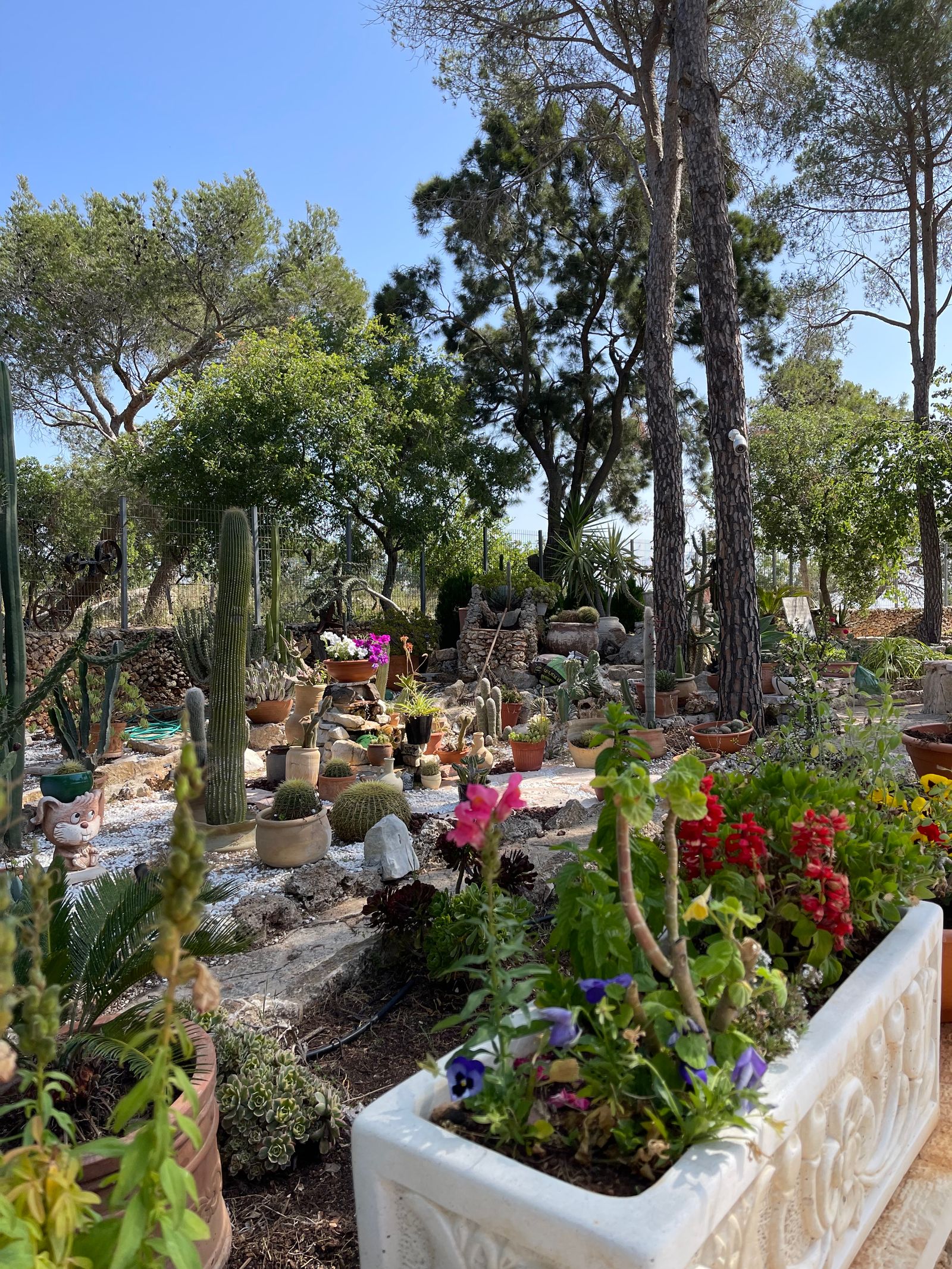
Today we said goodbye to Haifa and drove out of the city to a major biblical site in the town of Muhruqa in the Carmelite Mountains.

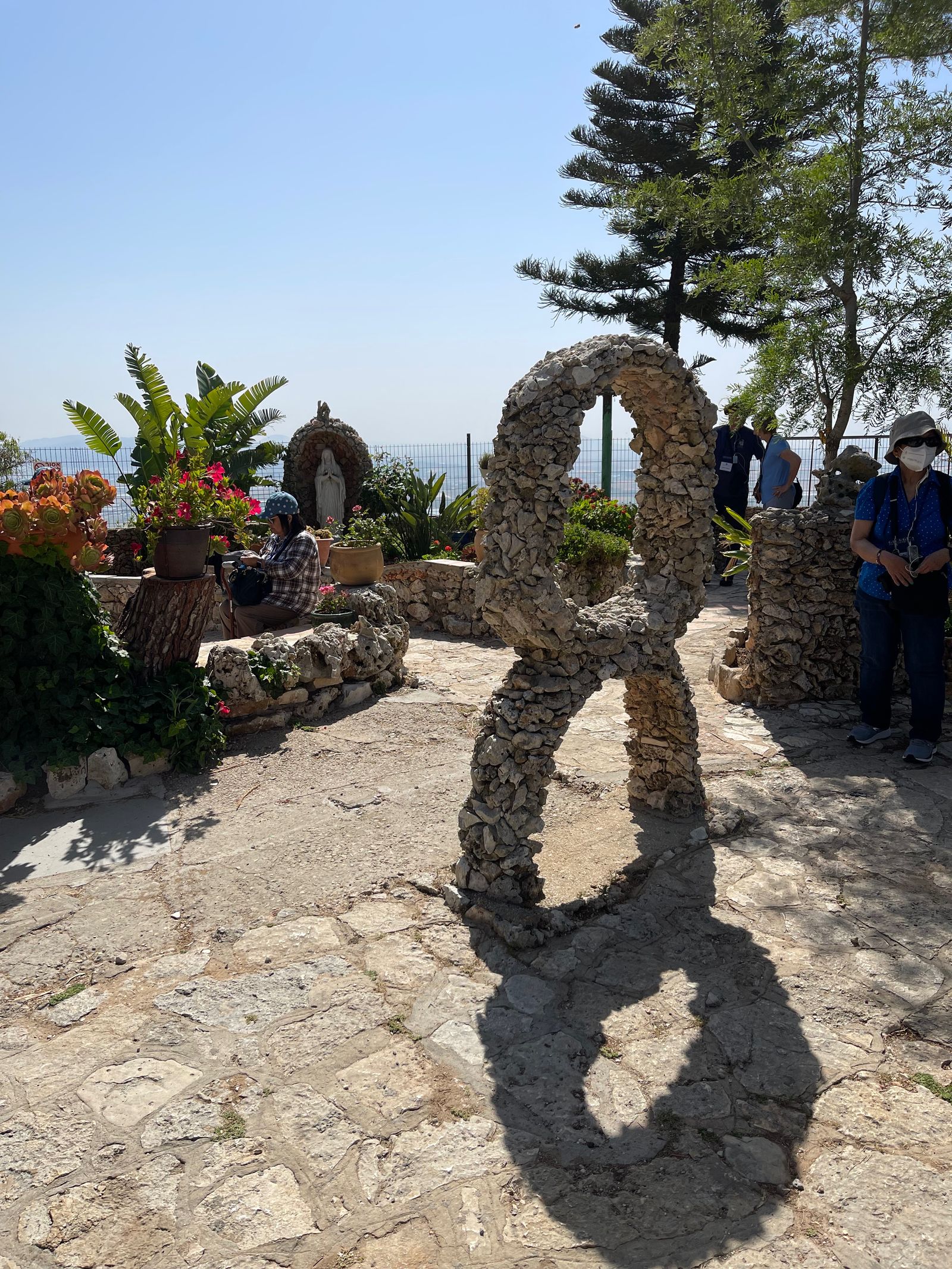

Here, the Carmelites established a church as a shrine to the prophet Elijah.
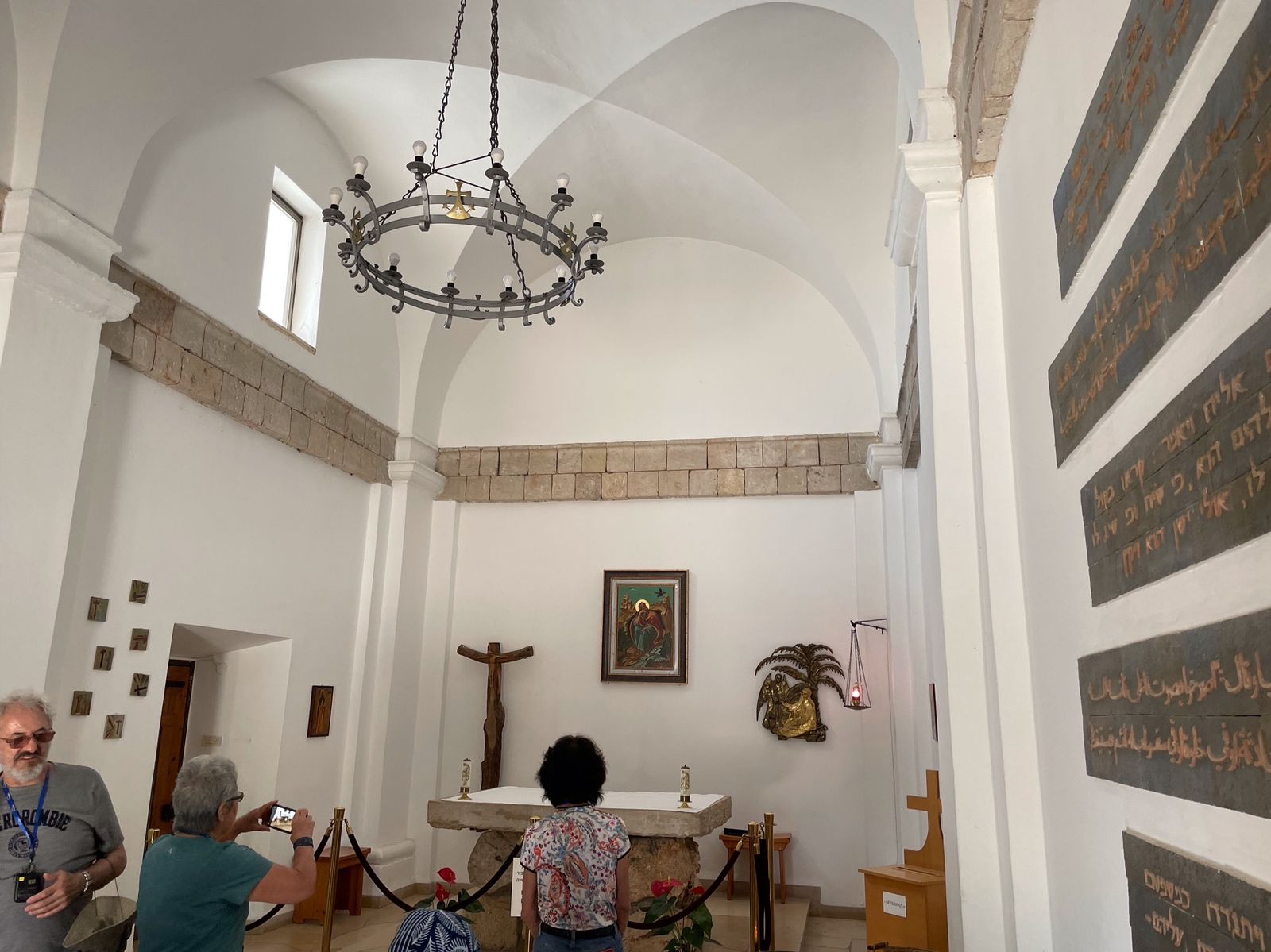
On this site, an important story, in the book of kings took place. It tells of the people who worshipped the idols of Baal versus the ones led by Elijah who worshipped the one God. The showdown, according to the story was the challenge by Elijah to see which god would light the fire for the offering.
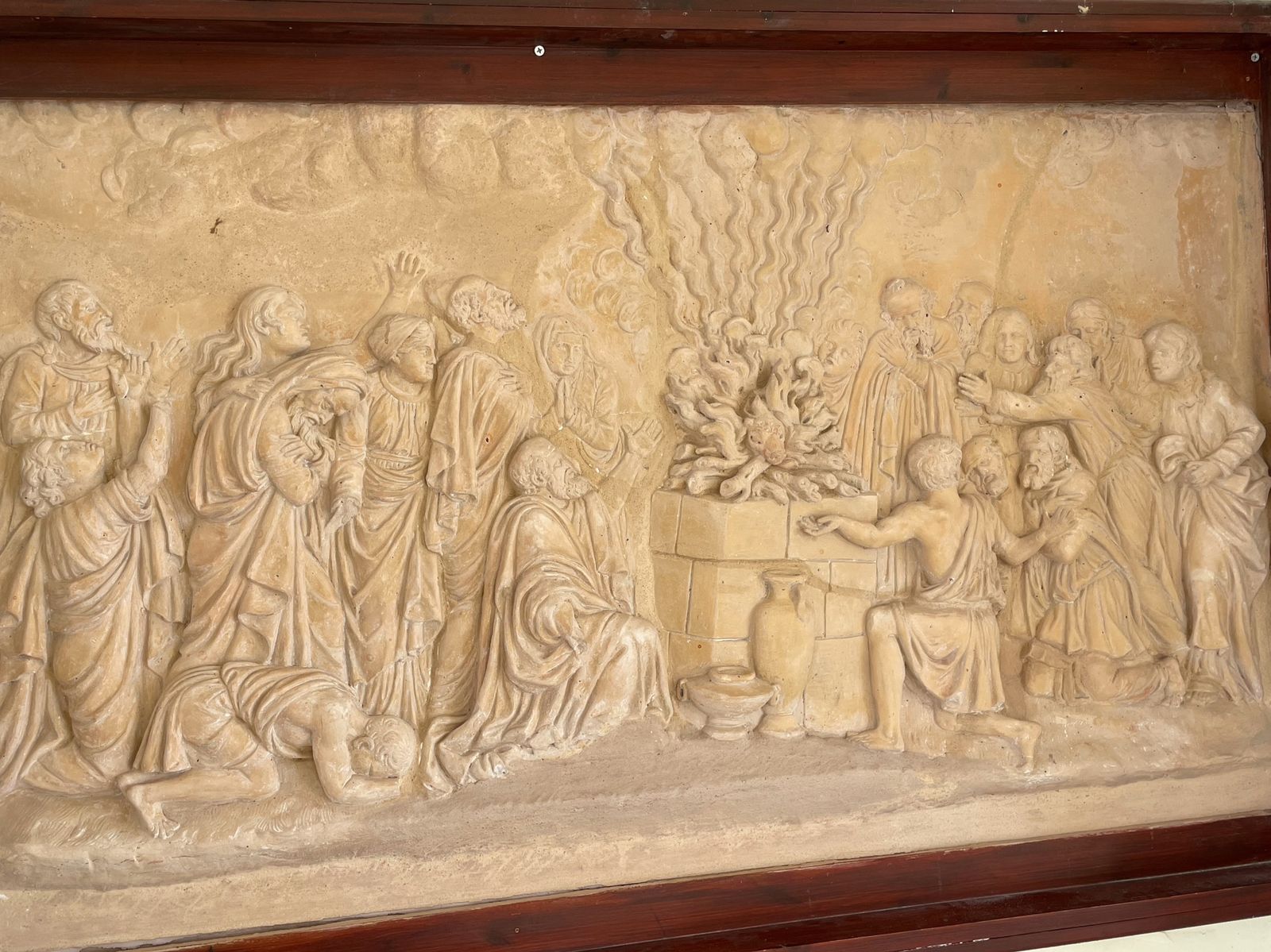
Ibrahim asked Wendy to read the story out loud, directly from the Bible.All those years of Sunday school education payed off because she knew how to pronounce all the names. Of course, having sung the oratorio "Elijah" by Mendelssohn didn’t hurt either. It was a beautiful moment.
Next stop, the town of Nazareth, an Arab town that is considered the unofficial Arab capitol of Israel. It used to be predominantly Christian, but is now 80% Muslim, and is famous as the city from which Mary was told by the angel Gabriel that she would bear the son of God and where Jesus spent his boyhood.
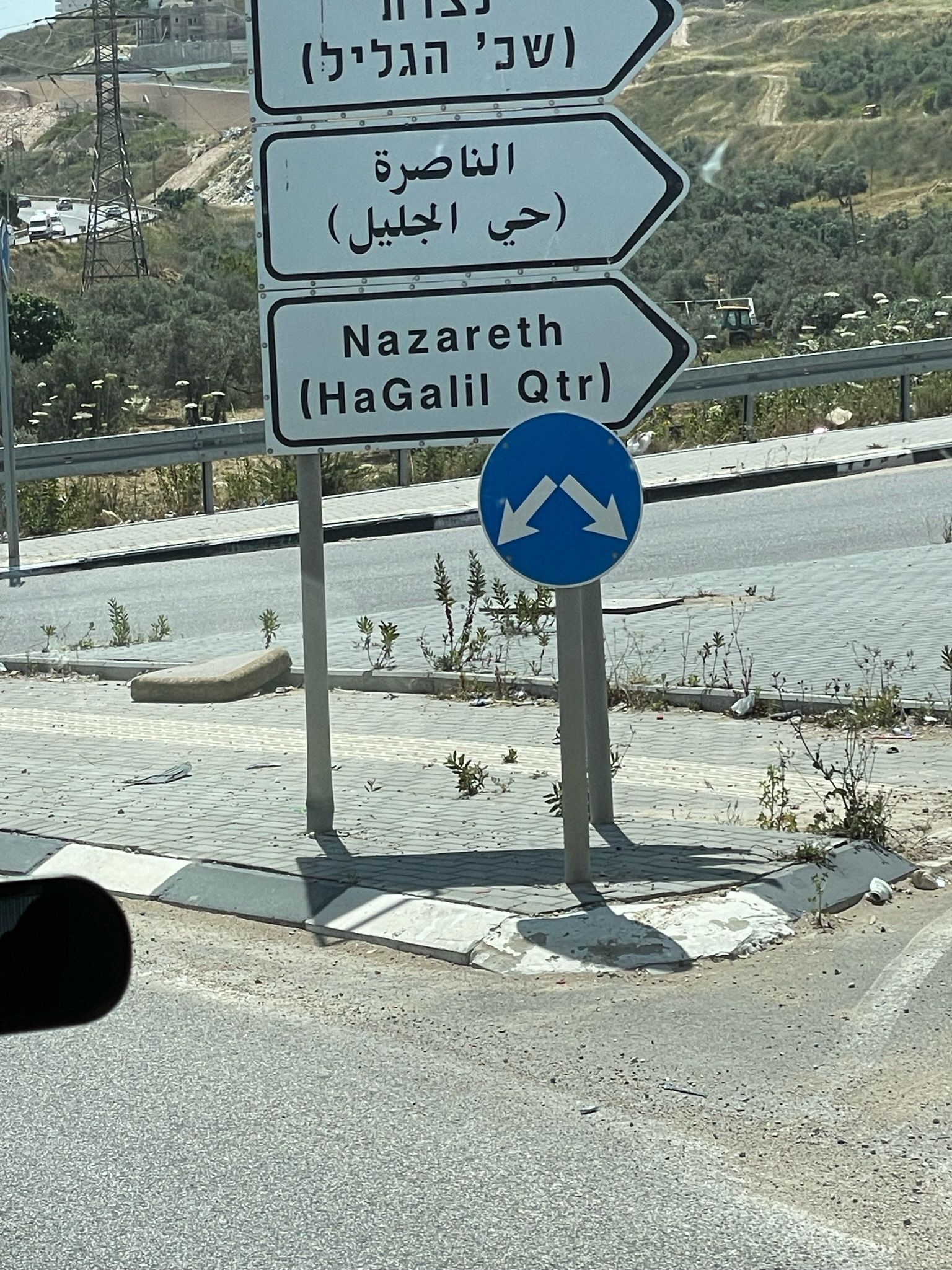
Unlike most tour groups that typically make a stop at the Church of the Annunciation and then head right back to the buses, Ibrahim wanted us to see the real Nazareth, and we walked through residential and market areas where there were no tourists. Nazareth is not a particularly friendly tourist town and is known for its corruption, little or no developmental planning, and crime relating to drugs. Still, we felt safe there and didn’t see any of that.
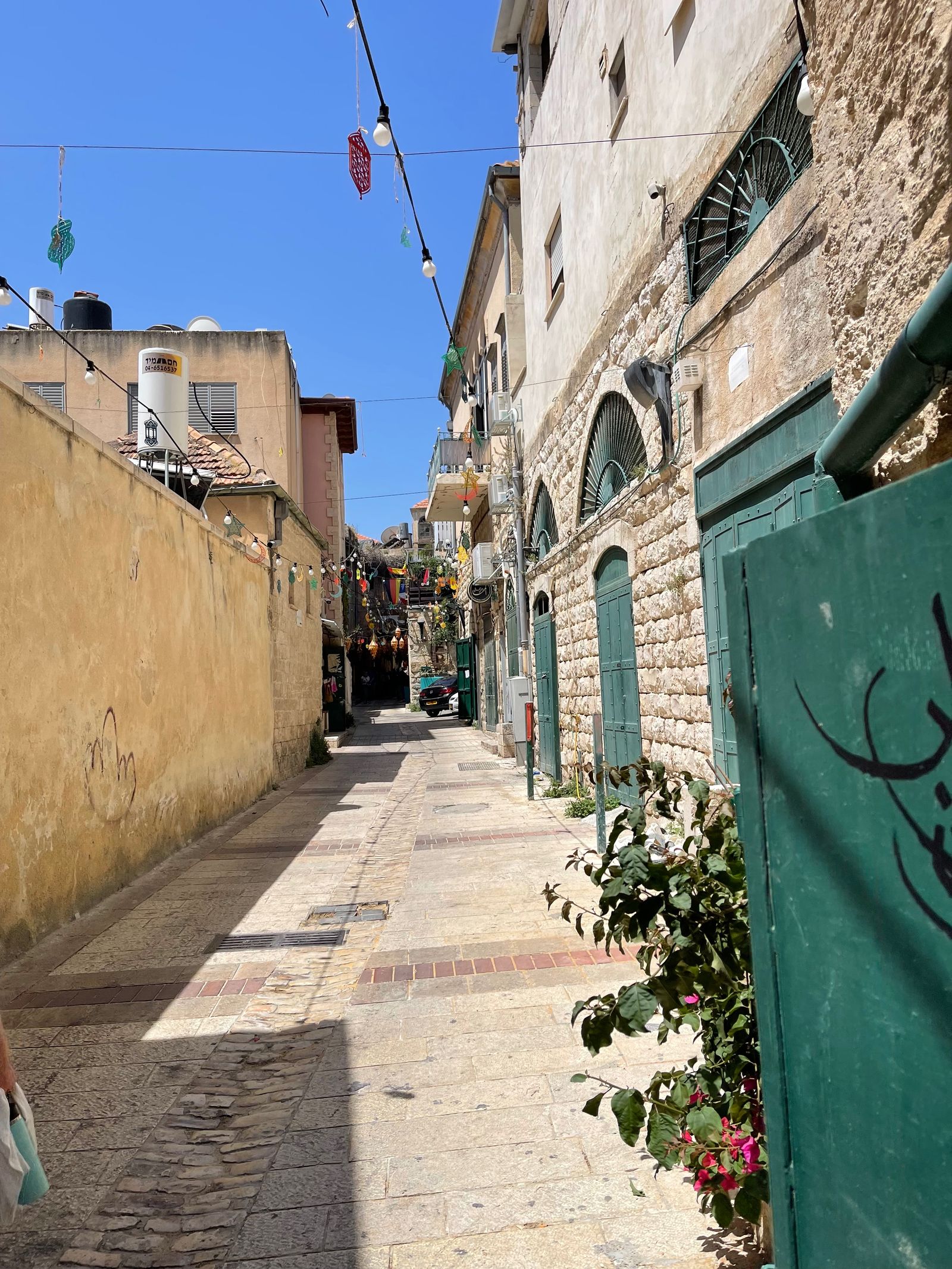
Ibrahim had a couple of good reasons for taking us through. The first, and probably most important one was bringing us to the shop of his friend, Azmi, to watch him make knafee, the same delicious snack we had previously in Jordan, but this one was made a bit differently. Azmi spread ghee in a pan, then added a flour/ water dough mixture tamping it down to make it even. He added cheese which has an Arabic name— a mixture of cow and goat milk. When it was settled evenly in the pan, he put it on a grill that rotated around for maybe 5 minutes. He expertly flipped it over, poured some sugar water over it and let it cook for another minute or two. Sprinkle some pistachios on top, cut it, and voila! Knafee! Deee-licious!
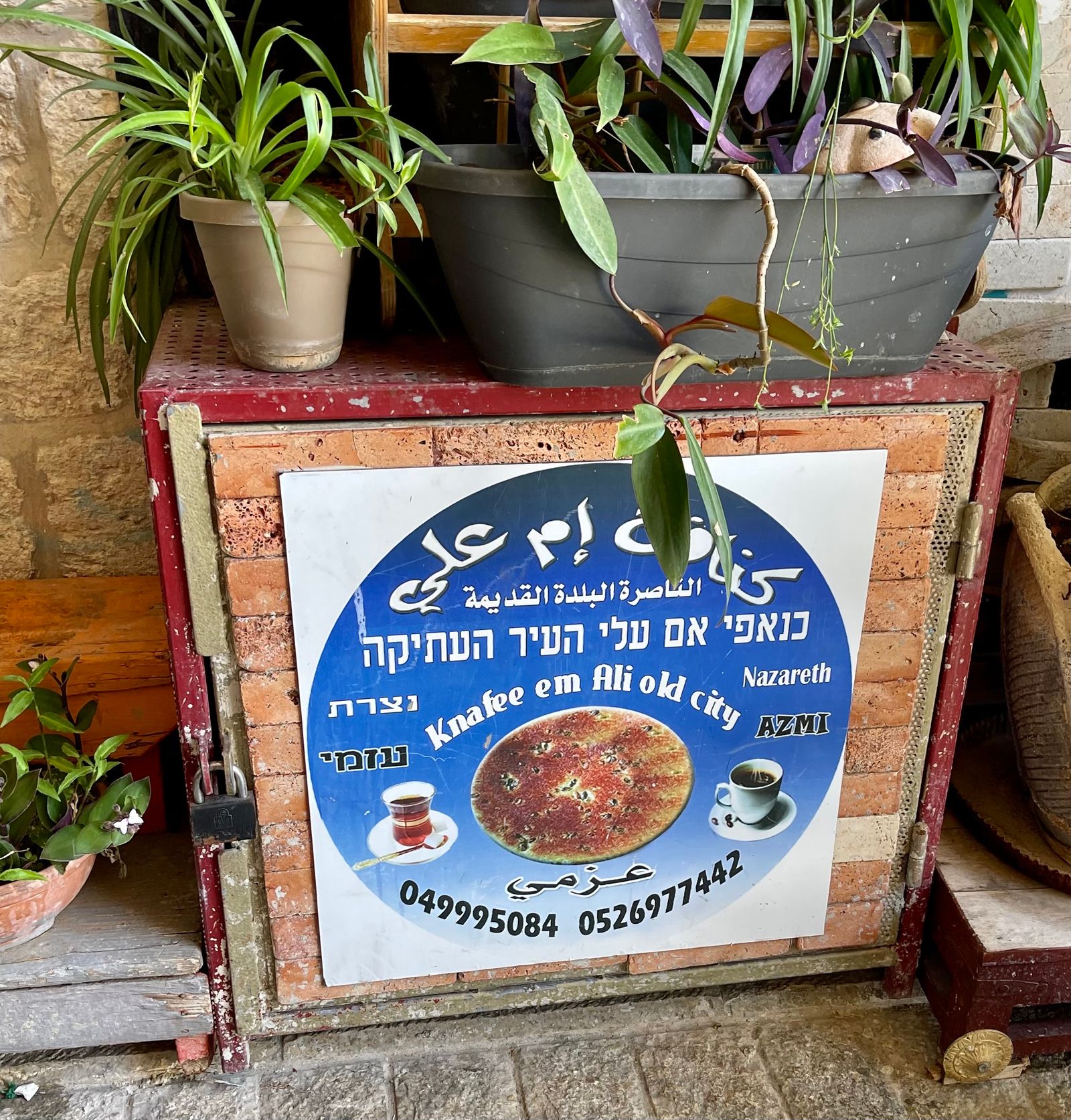



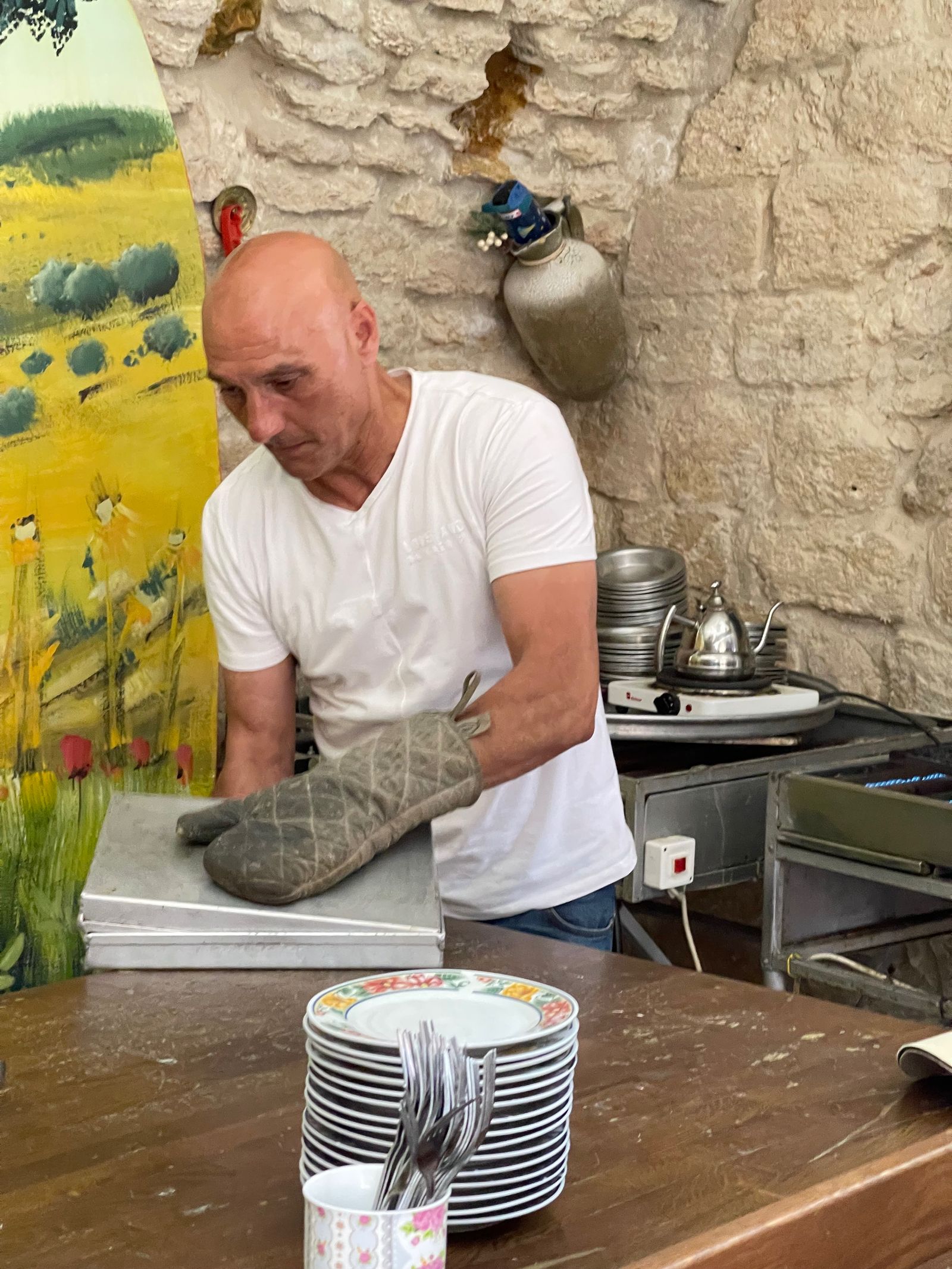
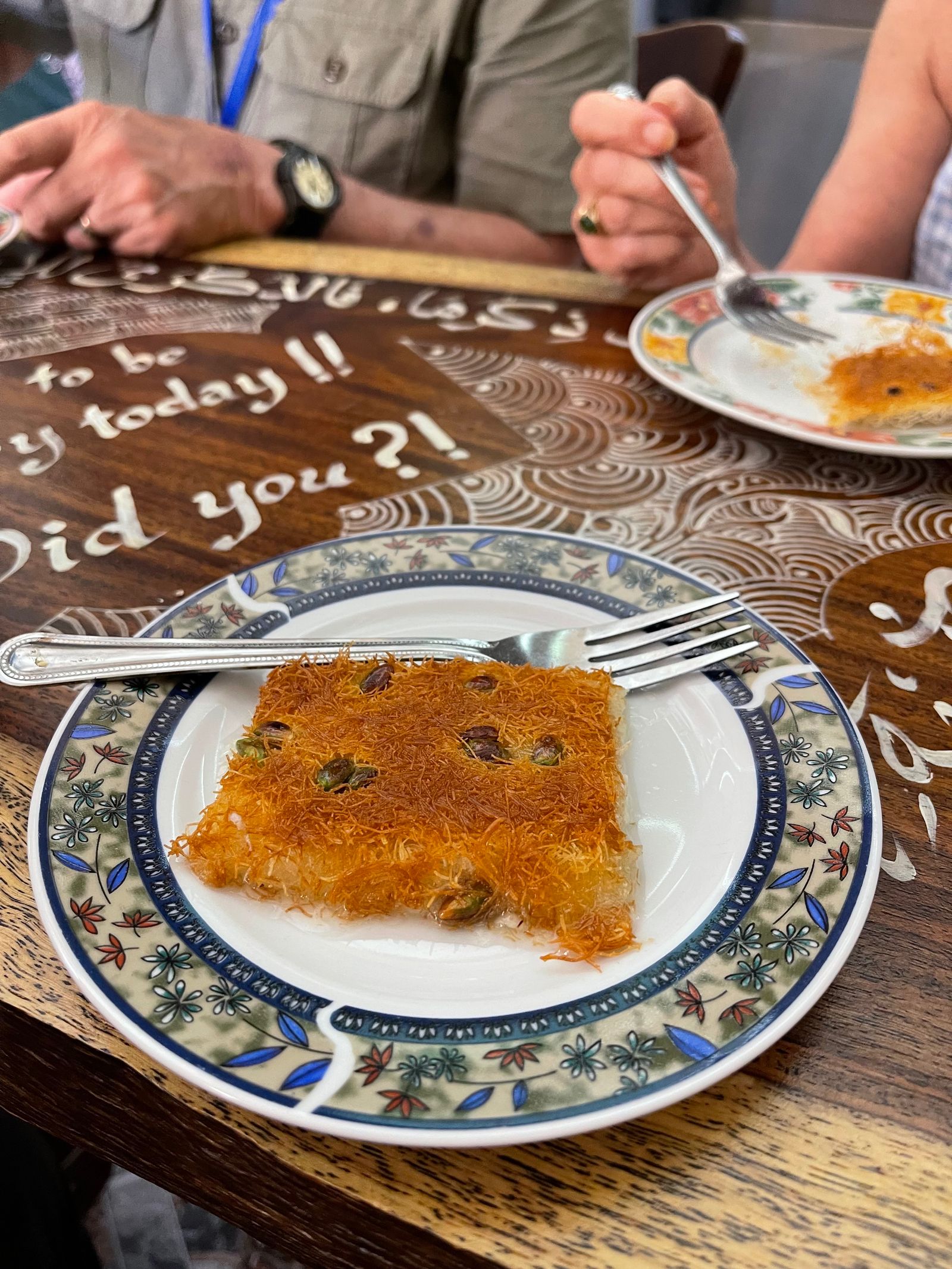
What was even more engaging however, was his story which he shared with us as he was preparing the dish. Like a fair number of people in Nazareth, he was a drug addict. His parents were not supportive of him. This went on for quite a few years until he finally accepted help from his mother and went to rehab to start the road to recovery. He inherited this shop from his grandfather, and has been sober 7+ years, is now married and has a little girl, and is doing ok. In a break from Arab tradition, he named his shop in honor of his mother, Ali. Evidently, Ibrahim had quite a lot of influence in supporting his road to recovery. It was a very moving story, it was also evident that Ibrahim was very proud of his role.
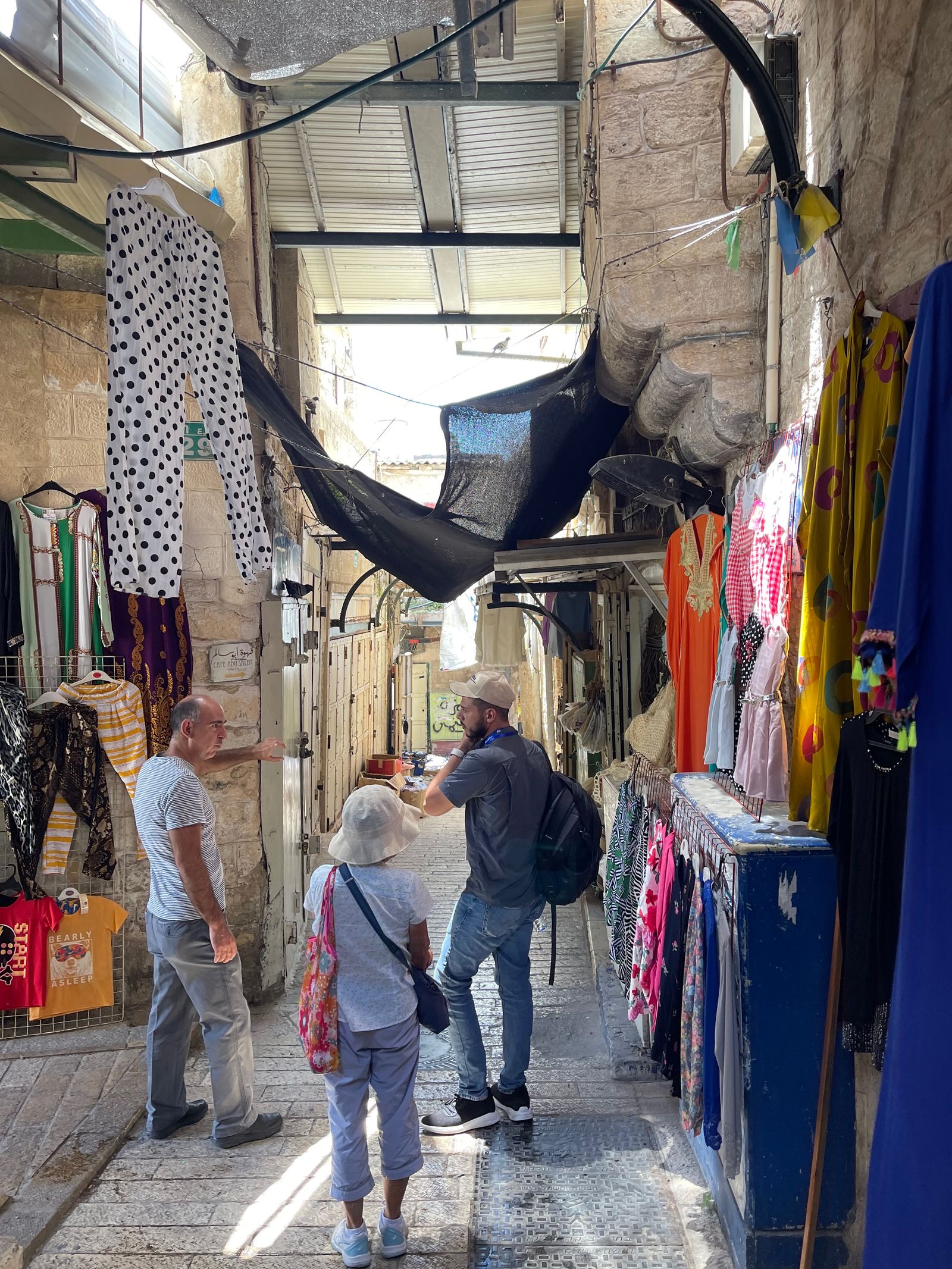
We walked through the alleyways and the little market on the tiny streets of Nazareth,finally arriving at the church, Basilica of the Annunciation. Many tourists walked through the modern and beautiful church, built upon at least two others churches immediately below it.
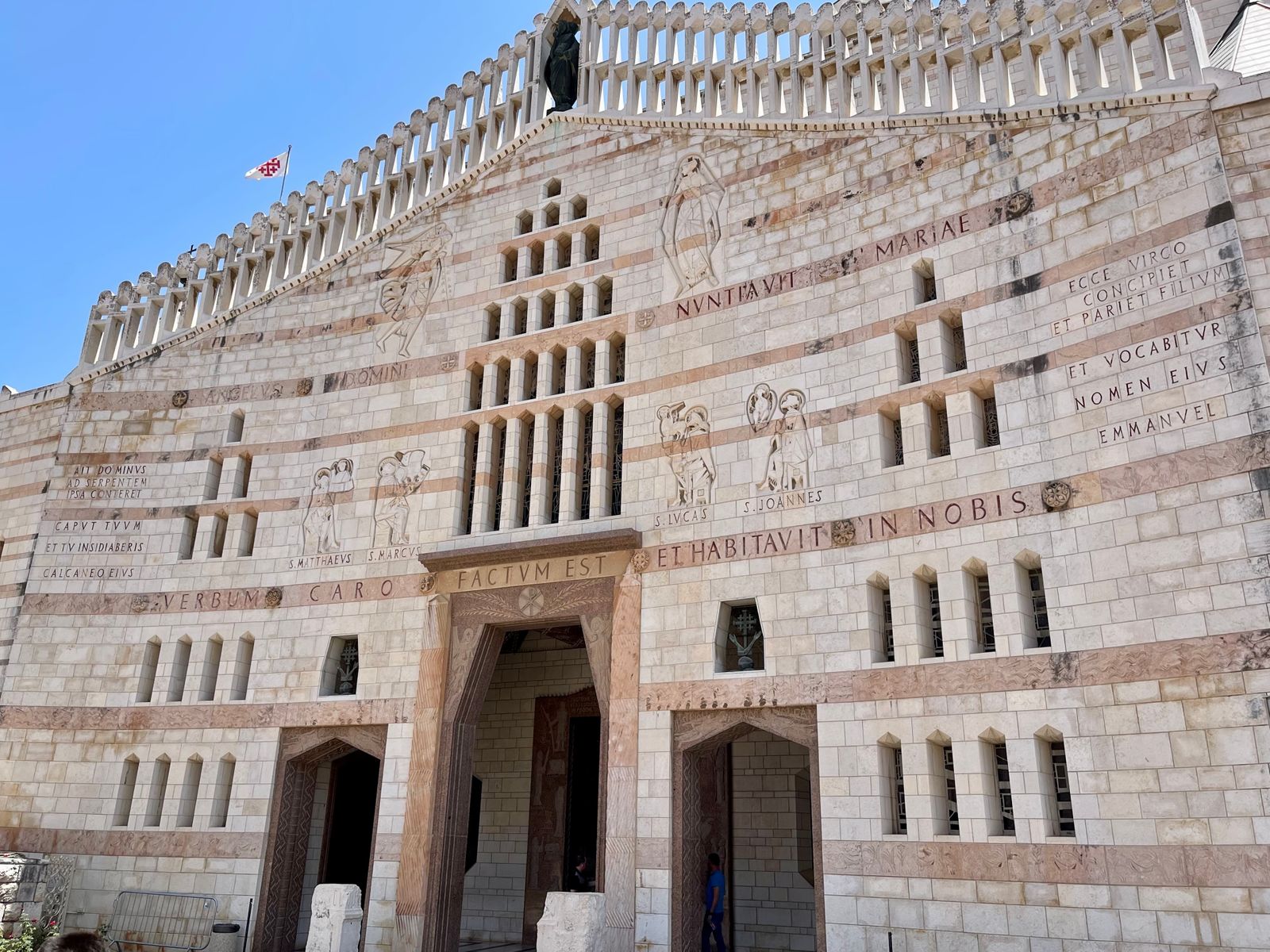
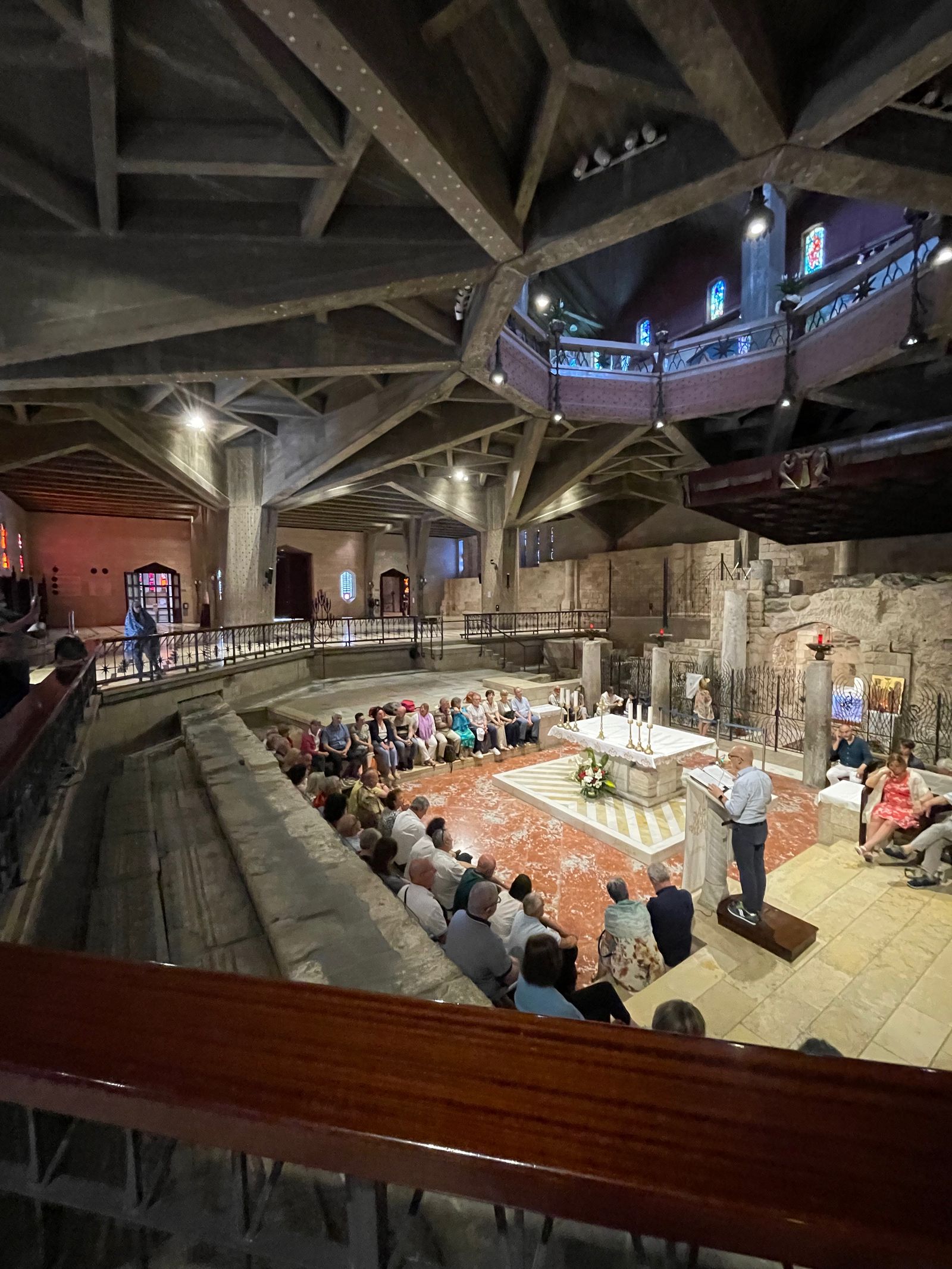
Many countries have a floor to ceiling panel here celebrating Mary. The US panel is pretty unique.

Lunch was at a Schwarma place, a real fast food operation.
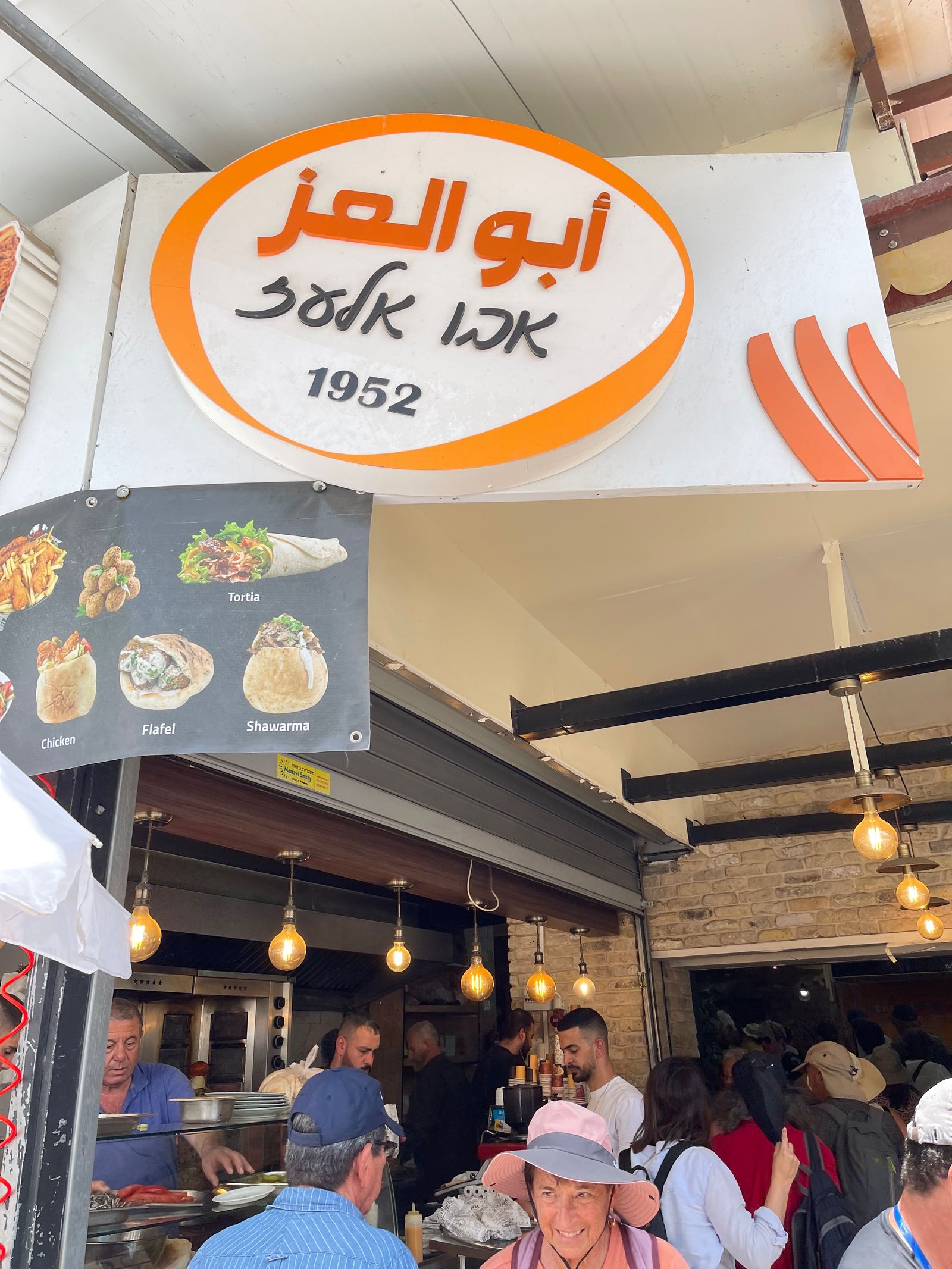
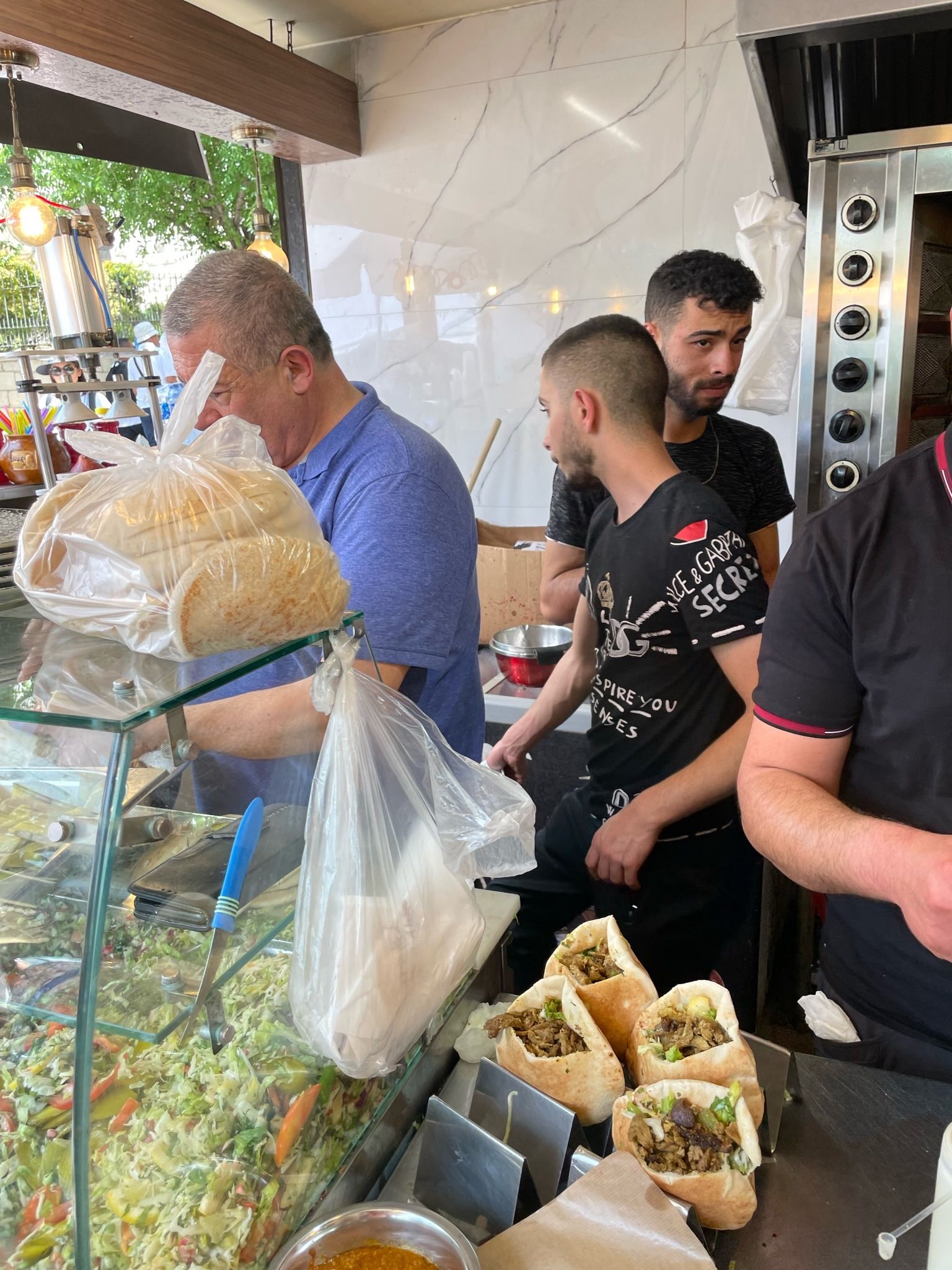
Then onto our final stop along the Jordan River, now a very small river, in some places, a stream. It was called Yardenit, the Galilee Baptismal site. John the Baptist was supposed to have baptized Jesus in the Jordan River in a different location, but many Christian pilgrims come here.



The entire place is a huge tourist trap, from the $1 fee to use the toilets, to the baptisms themselves. If you are not with a pilgrimage trip that has its own priest, you have to "rent a priest" ahead of time with a per head price for each person in your group. I guess it’s obvious that we were not impressed.
The Sea of Galilee, also called Lake Kinneret is the largest fresh water lake in Israel, and the first sight of it is beautiful despite the haze.
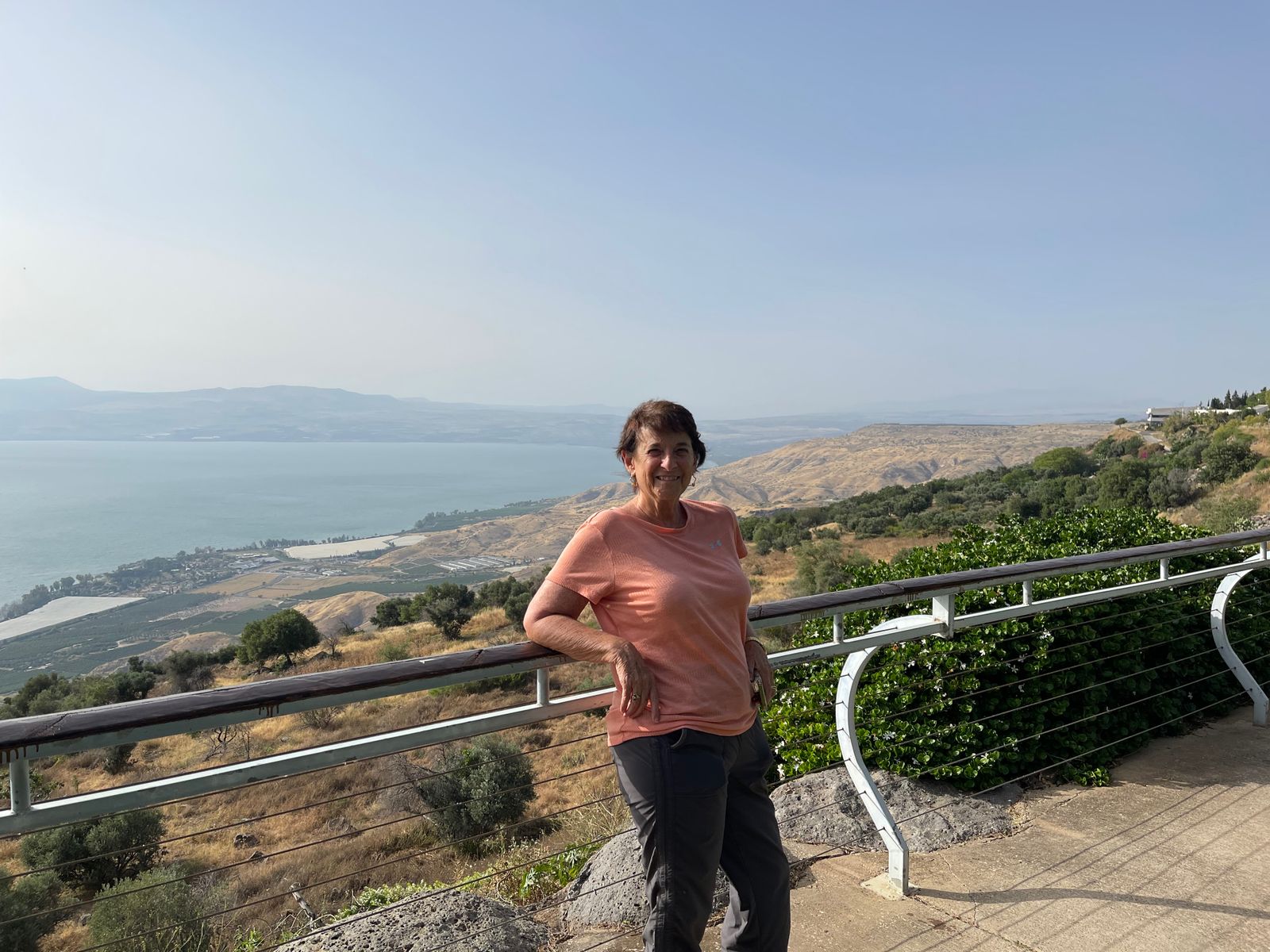

Overlooking the lake is the Kibbutz Kfar Haruv (Haruv means carob). They have built beautiful wood cabins and flowered, peaceful paths to get to them. Inside, it is fairly rustic with a small kitchen area and tight bedroom. Wifi was problematic but the beauty and peacefulness of the place, called "Peace Vista" was welcomed by all.
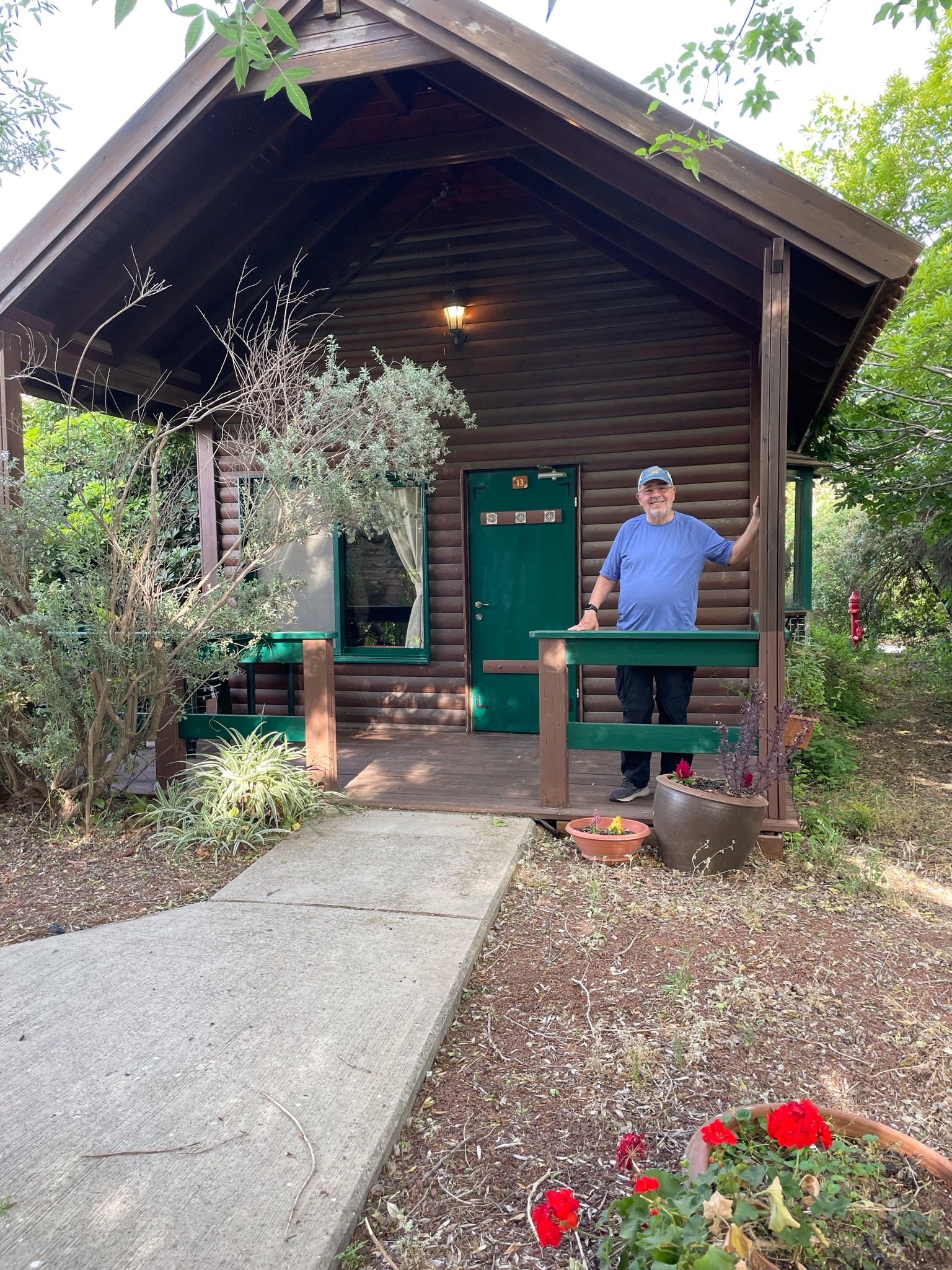
Before dinner in the community dining room, we had a talk by Joel, one of the founding members of this kibbutz who explained how it worked, both when he came in 1973, and the many changes that make it very different today. Kibbutz’s started as pure socialistic agricultural collectives - from each according to his ability, to each according to his needs.
Today, they have evolved to become somewhat capitalistic. In many ways they resemble corporations owned by the members. The members get salaries which are tied to the quality and kind of work they do but still have communal goals. They now live in individual houses (versus tents in 1973) and a shared system of government with committees, voting, etc. Most votes are a majority-51%, and if you’re not happy…leave! They also have diversified beyond agriculture to industry and hospitality. Members of the kibbutz receive dividends based on the performance of their various investments.
Joel took us over to the dining room which we had to ourselves. On this kibbutz, the residents get one meal each day—lunch, and also Shabbat dinner.
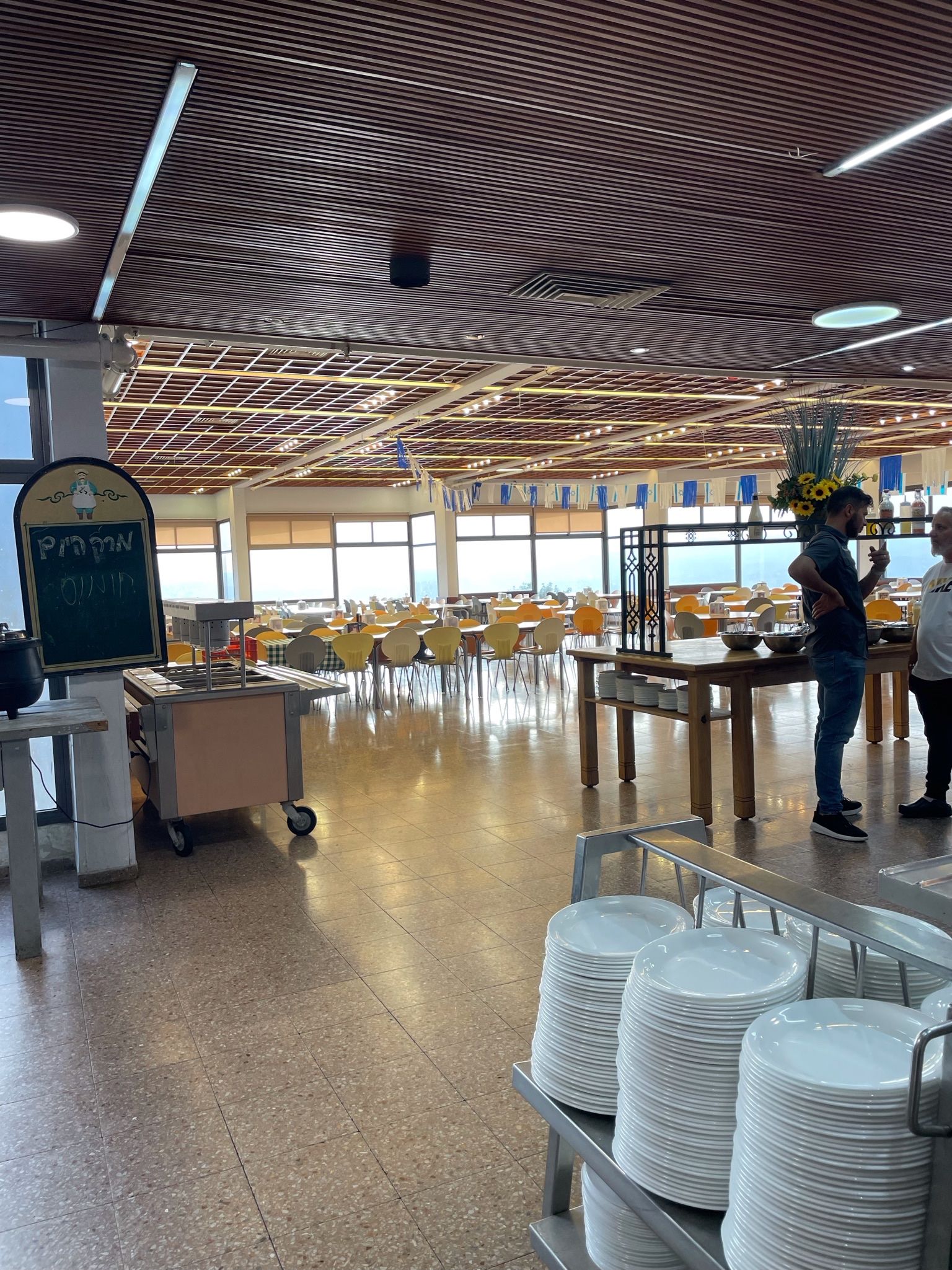
Before going into dinner he showed us two large Eucalyptus trees. Before 1967, this was all Syrian land. One of the most famous Israeli spies who penetrated deep into Syria was named Eli Cohen, aka "our man in Damascus". He suggested to the Syrian army that they needed shade in the dessert. So they planted some eucalyptus trees on top of all their underground bunkers. Well, duh! That made it very easy for the Israelis to find the army camps. The dining room is actually built on top of one and is used as a protective bunker if necessary. There are several other " protected areas" scattered across the kibbutz.

comments powered by Disqus